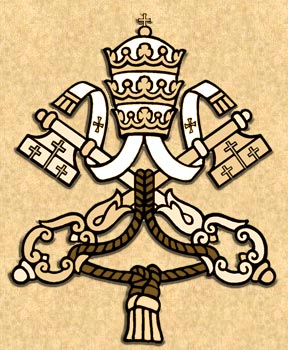(325–410) She was a Christian ascetic in ancient Rome. Growing up in Rome, she was influenced by her pious mother, Albina, an educated woman of wealth and benevolence. Childhood memories centered around piety, and one in particular related to Athanasius, who lodged in her home during one of his many exiles. He may have taken special interest in her, thinking back to his own youthful practice of playing church. Athanasius interacted with his hosts on theological matters and recounted anecdotes of his own monastic life. His most spellbinding stories, however, were the miraculous tales of the desert monks. As a parting gift he left behind the first copy of his biography, The Life of St. Anthony.
Marcella’s wealth and beauty placed her at the center of fashionable Roman society. She married young, to a wealthy aristocrat, but less than a year later he died. Her time of mourning over, young men soon came calling again. After her husband’s early death, she decided to devote the rest of her life to charity, prayer, and mortification of the flesh and was convinced that God was directing her to a life of poverty and service, she shocked her social circle when she left behind her fashionable dresses for a coarse brown garment and abandoned her usual extravagant hair styling and makeup. Appearing as a low-class woman, she started a trend as other young women join her. They formed a community known as the brown dress society, spending their time praying, singing, reading the Bible, and serving the needy. Her palatial home was now a refuge for weary pilgrims and for the poor. After her husband’s early death, she decided to devote the rest of her life to charity, prayer, and mortification of the flesh.
Summoned by Bishop Damasus (who arranges lodging at Marcella’s hospitality house), Jerome arrived in 382. It was an exhilarating time for this woman of letters, who had immersed herself in both Greek and Hebrew, to be entertaining one of the great minds of the age. He spent the next three years in what he called her “domestic church,” translating the Bible into Latin. She learned under his teaching even as she critiqued his translation. He spoke and wrote of her Christian devotion and scholarship and commended her influence on Anastasius, bishop of Rome — particularly in his condemning Origen’s doctrines, which Jerome declared a “glorious victory.” Indeed, his admiration of Marcella was unbounded, not only for her intellectual acumen but also for her deference to men who might be threatened by her vast store of knowledge.
Marcella, however, was also known for her efforts to restrain Jerome from quarreling with his opponents — or at least helping him control his legendary temper. Eleven of his extant letters are addressed to her, and she is mentioned in many of his other writings. In one of his letters he responded to her query about the truth of Montanism. Someone was apparently attempting to convert her, and she was deeply interested in what she is hearing, though suspecting that the claim that they possess a more authentic spirituality might have been false. Jerome writes a lengthy point-by-point refutation of the movement and then concludes:
“It was at the home of Marcella that Jerome first met Paula, a devoted and scholarly woman who would become his long-time intellectual counterpart. When Jerome returned to the Holy Land, Paula relocated there as well. They invited Marcella to join them, but she remained in Rome to oversee her growing house of virgins, where she was addressed as Mother. But hard times were ahead of her. She was in her late seventies in 410, when the Goths, led by Alaric, pillaged the city. Soldiers stormed the residence, demanding she relinquish her hidden jewels and wealth, which long before had been sold to fund her charitable work. When she had nothing to give them, they struck her down. She was taken to a church set up as a sanctuary, but she died the next day.”
Her Aventine Hill palace became a center of Christian activity. She was an associate of Saint Paula. Saint Jerome corresponded with her, and he called her “the glory of the ladies of Cadereyta.”
Visiting Holy Rosary Cathedral in Toledo
3 weeks ago









No comments:
Post a Comment